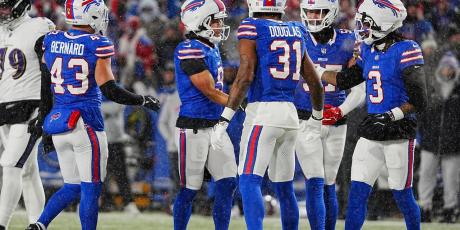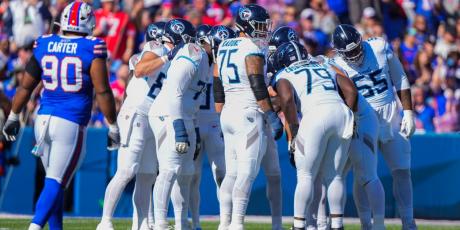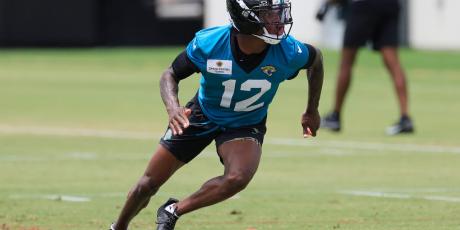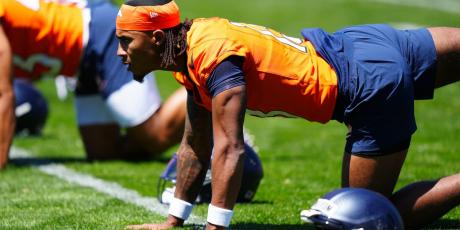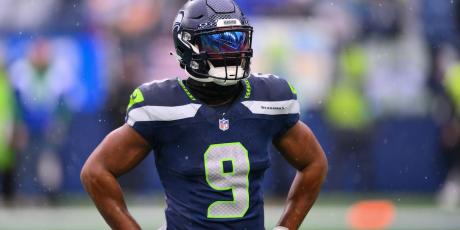John Paulsen's 2014 Draft Day Strategery

In the intro to last year’s Strategery piece – warning, I was very high on Darren Sproles in PPR formats – I discussed my ol’ ball coach, Bo Ryan, and one of his favorite sayings – perfect practice makes perfect – while discussing the value of mock drafts as a way to hone one’s draft day strategy. What happened nine months later? Bo led his Badgers to a Final Four appearance.
Coincidence? I think not.
So for those of you scoring at home, that’s another mention, so I’m expecting another Final Four run in 2015 from a Wisconsin team that is bringing just about everyone back.
You’re welcome, Badger fans.
On to the strategerizing…
First things first – you have to understand your scoring system. Is your league standard or PPR (or half PPR)? How many points is a passing touchdown worth? What are your starting lineup requirements? (Hint: the more players you have to start at a particular position, the more that position is worth.) Does your league have any wacky scoring settings?
If your league is atypical, it’s good practice to calculate each player’s end-of-season Relative Value (using Value Based Drafting principles). Even better, take a look at the positional distribution in the top 50 or top 75 for the last two or three seasons. This will give you a good idea how important each position is in your league.
How do you calculate RV? It’s fairly simple. Subtract a player’s end-of-season fantasy points from the “last starter” at his position. For example, if your league requires two starting running backs, you can subtract the fantasy points of the #24 RB in your league from the total for Jamaal Charles. The result is Charles’s RV. Continue until you get to the #24 RB, who will have a RV of zero. Once you have done this for all the players – I recommend getting familiar with a Microsoft product called Excel – you’ll combine the lists and sort by RV. You might find that in your league has 10 quarterbacks in the top 25 every year. In that case, you’ll want to focus on the QB position early on.
Don’t want to do all of this legwork? Don’t worry, 4for4 has you covered with our Full Impact customized rankings. Once you enter your scoring system, the site uses our award-winning projections to construct customized top 200 rankings for your league.
If you play in a typical league (PPR or standard) with no unusual scoring settings, you can use the basic (but still customizable) Top 200 rankings on the site.
First Steps
Sometimes it seems that there are nearly as many draft strategies as there are fantasy analysts. Wait on a QB (a.k.a. Late-Round QB), Stud RB, Upside Down Drafting (a.k.a. Zero RB), TE Early, the list goes on and on. I think it’s important not to get locked into one particular philosophy. Doing so won’t allow for a flexible draft plan that can take advantage of value as it emerges throughout the draft.
My draft plan is generally dependent on the makeup of the upcoming season, so it’s important to evaluate the fantasy landscape as a whole before sketching out a strategy. Here are a few things I’ve noticed while preparing for draft season this year:
1. QB is historically deep.
This has been the trend for the last few years, but there are more capable fantasy passers now than in anytime in my 20 years playing this beautiful and frustrating game. The traditional pocket quarterback is still well represented by the likes of Peyton Manning, Drew Brees, Matthew Stafford, Tom Brady, Matt Ryan, Jay Cutler, Tony Romo, Philip Rivers, Ben Roethlisberger, Andy Dalton and Carson Palmer. But the advent of the running quarterback – i.e. Cam Newton, Russell Wilson, Colin Kaepernick and Robert Griffin III – is what really has expanded the depth of the position. Of course, there are the guys who can really throw, but can also run a little – Aaron Rodgers, Nick Foles, Andrew Luck, Alex Smith and even Ryan Tannehill are all projected for at least 200 yards rushing.
The result of all of this depth is that fantasy owners in a traditional one-QB league can wait a long time to draft a quarterback and still get a very good player. For example, my #8 QB, Russell Wilson, has an ADP in the 10th round; I’d be perfectly happy with him as my starter. On the flip side, with more and more people waiting on a QB, there are times when it makes sense to draft one of the elites. I wouldn’t look at anyone funny if they pulled the trigger on Peyton, A-Rod or Brees in the 4th round, or any of the passers in the next tier – Foles, Stafford or Luck – in the 6th or 7th round. Again, that’s just capitalizing on value that emerges during the draft.

- All Premium Content
- The most Accurate Rankings Since 2010
- Expert Draft Picks w/DraftHero
- Highest Scoring Lineup + Top Available Players w/LeagueSync
- ...and much much more

